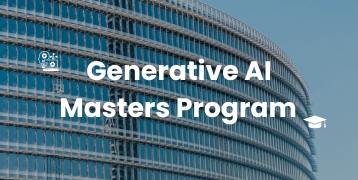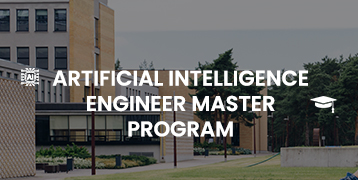
What does one understand the term “Big Data”?
Huge information may be a term related to complicated and huge datasets. A {relational informationbase|electronic database|on-line database|computer database|electronic information service} cannot handle huge data, and that’s why special tools and ways are accustomed to performing operations on a massive assortment of knowledge. Huge information permits corporations to grasp their business higher and helps them derive important info from the unstructured and information collected on a daily basis. Huge information conjointly permits the businesses to require higher business choices backed by information.
What are the 5 V’s of huge Data?
The 5 V’s of huge information is as follows:
• Volume – Volume represents the quantity i.e. the quantity of knowledge that’s growing at a high rate i.e. information volume in Petabytes
• Rate – Velocity is that the rate at that information grows. Social media contributes a serious role within the rate of growing information.
• Selection – Variety refers to the various information varieties i.e. varied information formats like text, audios, videos, etc.
• Truthfulness – Veracity refers to the uncertainty of accessible information. Truthfulness arises because of the high volume of knowledge that brings wholeness and inconsistency.
• Value –Value refers to turning information into the price. By turning accessed huge information into values, businesses might generate revenue.
Tell North American country however huge information and Hadoop are associated with one another.
Huge information and Hadoop are virtually synonyms terms. With the increase of huge information, Hadoop, a framework that focuses on huge information operations conjointly became standard. The framework may be employed by professionals to research huge information and facilitate businesses to create choices.
However is huge information analysis useful in increasing business revenue?
Huge information analysis has become vital for companies. It helps businesses to differentiate themselves from others and increase the revenue. Through prophetical analytics, huge information analytics provides businesses bespoke recommendations and suggestions. Also, huge information analytics permits businesses to launch new merchandise looking at client desires and preferences. These factors create businesses earn a lot of revenue, and therefore corporations are mistreatment huge information analytics. Corporations might encounter {a significant|a huge|a major} increase of 5-20% in revenue by implementing big information analytics. Some standard corporations that are mistreatment huge information analytics to extend their revenue is – Walmart, LinkedIn, Facebook, Twitter, Bank of America, etc.
Make a case for the steps to be followed to deploy an enormous information resolution.
Followings are the 3 steps that are followed to deploy an enormous information resolution –
i. information bodily function
The first step for deploying an enormous information resolution is that the information bodily function i.e. extraction of knowledge from varied sources. the information supply could also be a CRM like Salesforce, Enterprise Resource designing System like SAP, RDBMS like MySQL or the other log files, documents, social media feeds, etc. the information may be eaten either through batch jobs or period streaming. The extracted information is then kept in HDFS.
Steps of deploying a huge information resolution
ii. Information Storage
After information bodily function, the successive step is to store the extracted information. the information either be kept in HDFS or NoSQL information (i.e. HBase). The HDFS storage works well for serial access whereas HBase for random read/write access.
iii. Processing
The final step in deploying an enormous information resolution is that the processing. the information is processed through one in every of the process frameworks like Spark, MapReduce, Pig, etc.
Outline various elements of HDFS and YARN
The 2 main elements of HDFS are-
• Name Node – this is often the master node for process data info for information blocks inside the HDFS
• DataNode/Slave node – this is often the node that acts as a slave node to store the information, for process and use by the NameNode
In addition to serving the consumer requests, the NameNode executes either of 2 following roles –
• CheckpointNode – It runs on a unique host from the NameNode
• BackupNode- it’s a read-only NameNode that contains classification system data info excluding the block locations
The two main elements of YARN are–
• ResourceManager– This part receives process requests and consequently allocates to various NodeManagers looking on process desires.
• NodeManager– It executes tasks on every single information Node

Why Hadoop is used for giant information Analytics?
Since information analysis has become one in one of the key parameters of business, hence, enterprises are managing huge quantities of structured, unstructured, and semi-structured information. Analyzing unstructured information is sort of tough wherever Hadoop takes major dispense with its capabilities of
• Storage
• Processing
• Data assortment
Moreover, Hadoop is an open supply and runs on trade goods hardware. Thus it’s a cost-benefit resolution for businesses.
What’s fsck?
fsck stands for classification system Check. It’s a command employed by HDFS. This command is employed to examine inconsistencies and if there’s any downside within the file. As an example, if there are any missing blocks for a file, HDFS gets notified through this command.
What are the most common variations between NAS (Network-attached storage) and HDFS?
The most variations between NAS (Network-attached storage) and HDFS –
• HDFS runs on a cluster of machines whereas NAS runs on a private machine. Hence, information redundancy may be a common issue in HDFS. On the contrary, the replication protocol is completely different just in the case of NAS. Therefore the possibilities of knowledge redundancy are a lot less.
• Data is kept as information blocks in native drives just in case of HDFS. just in case of NAS, it’s kept in dedicated hardware.
What’s the command to format the NameNode?
$ hdfs namenode -format
Does one have any huge information experience? If thus, please share it with North American countries.
There’s no specific answer to the question because it may be a subjective question and also the answer depends on your previous expertise. Asking this question throughout an enormous information interview, the asker desires to grasp your previous expertise and is additionally attempting to judge if you’re accepting the project demand.
So, however, can you approach the question? If you’ve got previous expertise, begin together with your duties in your past position, and slowly add details to the speech communication. Tell them about your contributions that created the project undefeated. This question is mostly, the ordinal or third question asked in an associate degree interview. The later queries have supported this question, thus answering it fastidiously. You ought to conjointly look to not go overboard with one facet of your previous job. Keep it easy and to the purpose.
Does one like sensible information or sensible models? Why?
How to Approach: this is often a tough question however usually asked within the huge information interview. It asks you to decide between sensible information or sensible models. As a candidate, you ought to attempt to answer it from your expertise. several corporations wish to follow a strict method of evaluating information, suggesting that they need already designated information models. In this case, having sensible information may be game-changing. The opposite method conjointly works as a model is chosen and supported by sensible information.
As we have already mentioned, answer it from your expertise. However, don’t say that having each sensible information and sensible models is vital because it is tough to own each in reality comes.
Can you optimize algorithms or code to make them run faster?
The solution to the present question should be “Yes.” world performance matters and it doesn’t rely on the information or model you’re mistreatment in your project.
The asker may additionally have an interest in grasping if you’ve had any previous expertise in code or formula optimization. For a beginner, it depends on what he worked on in the past. Skilled candidates can share their expertise consequently moreover. However, be honest concerning your work, and it’s fine if you haven’t optimized code in the past. Simply let the asker understand your real expertise and you’ll be able to crack the large information interview.
However, does one approach information preparation?
Information preparation is one in every one of the crucial steps in huge information comes. An enormous information interview might involve a minimum of one question-supported information preparation. Once the asker asks you this question, he desires to grasp what steps or precautions you’re taking throughout information preparation.
As you already understand, information preparation is needed to urge necessary information which may then be used for modeling functions. You ought to convey this message to the asker. You ought to conjointly emphasize the kind of model you’re aiming to use and the reasons behind selecting that individual model. Last, however not the smallest amount, you ought to conjointly discuss necessary information preparation terms like reworking variables, outlier values, unstructured information, distinguishing gaps, and others.
Related Courses
| Course Name | Enroll Now |
|---|---|
| Big Data Architect Masters Program | Enroll Now |
| BIG DATA ANALYTICS TRAINING | Enroll Now |
| Big Data Architect Training | Enroll Now |
| BIG DATA HADOOP TRAINING | Enroll Now |
| BIG DATA MAPREDUCE TRAINING | Enroll Now |
However, would you rework unstructured information into structured data?
Unstructured information is extremely common in huge information. The unstructured information ought to be remodeled into structured information to ensure the correct information analysis. You’ll be able to begin respondent the question by in short differentiating between the 2. Once done, you’ll be able to currently discuss the ways you utilize to rework one type to a different one. You would possibly conjointly share the real-world scenario wherever you probably did it. If you’ve recently graduated, then you’ll be able to share info associated with your tutorial.
By respondent this question properly, you signify that you just perceive the categories of knowledge, each structured and unstructured, and even have the sensible expertise to figure with these. If you provide a solution to the present question specifically, you’ll positively be able to crack the large information interview.
Which hardware configuration is most helpful for Hadoop jobs?
Dual processors or core machines with a configuration of four / eight GB RAM and code memory are good for running Hadoop operations. However, the hardware configuration varies supporting the project-specific progress and method flow and wish customization consequently.
What happens once 2 users attempt to access constant get into the HDFS?
HDFS NameNode supports exclusive write solely. Hence, solely the primary user can receive the grant for file access, and also the second hand is rejected.
The way to recover a NameNode once it’s down?
The following steps to execute to create the Hadoop cluster up and running:
1. Use the image that is a classification system data duplicate to begin a replacement NameNode.
2. put together the DataNodes and conjointly the purchasers to create them to acknowledge the recently started NameNode.
3. Once the new NameNode completes loading the last stop FsImage that has received enough block reports from the DataNodes, it’ll begin to serve the consumer.
In the case of huge Hadoop clusters, the NameNode recovery method consumes a great deal of your time which seems to be a lot of vital challenge just in case of routine maintenance.
What does one perceive by Rack Awareness in Hadoop?
It is an associate degree formula applied to the NameNode to make your mind up about how blocks and their replicas are placed. looking at rack definitions network traffic is reduced between DataNodes inside the constant rack. as an example, if we tend to take into account the replication issue as three, 2 copies are placed on one rack whereas the third copy during a separate rack.
What’s the distinction between “HDFS Block” and “Input Split”?
The HDFS divides the computer file physically into blocks for a process that is thought of as an HDFS Block.
Input Split may be a logical division of knowledge by plotter for mapping operation.
What are the common input formats in Hadoop?
Below are the common input formats in Hadoop –
• Text Input Format – The default input format outlined in Hadoop is the Text Input Format.
• Sequence File Input Format – To scan files during a sequence, the Sequence File Input Format is employed.
• Key price Input Format – The input format used for plain text files (files broken into lines) is the Key price Input Format.
Make a case for some necessary options of Hadoop.
Hadoop supports the storage and process of huge information. it’s the simplest resolution for handling huge information challenges. Some necessary options of Hadoop are –
• Open supply – Hadoop is an associate degree open supply framework which implies it’s accessible free from price. Also, the users are allowed to vary the ASCII text file as per their necessities.
• Distributed process – Hadoop supports the distributed process of knowledge i.e. quicker process. The information in Hadoop HDFS is kept in a distributed manner and MapReduce is accountable for the multiprocessing of knowledge.
• Fault Tolerance – Hadoop is very fault-tolerant. It creates 3 replicas for every block at completely different nodes, by default. This range may be modified per the need. So, we can recover the information from another node if one node fails. The detection of node failure and recovery of knowledge is completed mechanically.
• Reliability – Hadoop stores information on the cluster in a reliable manner that’s free of the machine. So, the information kept in Hadoop surroundings isn’t suffering from the failure of the machine.
• Scalability – Another necessary feature of Hadoop is the measurability. it’s compatible with the opposite hardware and we will simply ass the new hardware to the nodes.
• High convenience – the information kept in Hadoop is out there to access even when the hardware fails. Just in case of hardware failure, the information may be accessed from another path.
Make a case for the various modes within which Hadoop runs.
Apache Hadoop runs within the following 3 modes –
• Standalone (Local) Mode – By default, Hadoop runs during a native mode i.e. on a non-distributed, single node. This mode uses the native classification system to perform input and output operations. This mode doesn’t support the employment of HDFS, thus it’s used for debugging. No custom configuration is required for configuration files during this mode.
• Pseudo-Distributed Mode – within the pseudo-distributed mode, Hadoop runs on one node similar to the Standalone mode. during this mode, every daemon runs during a separate Java method. As all the daemons run on one node, there’s a constant node for each of the Master and Slave nodes.
• Fully–Distributed Mode – within the fully distributed mode, all the daemons run on separate individual nodes and therefore form a multi-node cluster. There are completely different nodes for Master and Slave nodes.
Make a case for the core elements of Hadoop.
Hadoop is an associate degree open supply framework that’s meant for the storage and processing of huge information in a distributed manner. The core elements of Hadoop are –
• HDFS (Hadoop Distributed File System) – HDFS is the basic storage system of Hadoop. the massive information files running on a cluster of trade goods hardware ar keep in HDFS. It will reliably store information even once hardware fails.
Core elements of Hadoop
• Hadoop MapReduce – MapReduce is the Hadoop layer that’s accountable for processing. It writes associate degree applications to method unstructured and structured information kept in HDFS. it’s accountable for the multiprocessing of high volume {of information|of knowledge|of information} by dividing data into freelance tasks. The process is completed in 2 phases Map and cut back. The Map is the initial part of the process that specifies complicated logic code and also the cutback is the second part of the process that specifies light-weight operations.
• YARN – The process framework in Hadoop is YARN. it’s used for resource management and provides multiple processing engines i.e. information science, period streaming, and execution.
What are the configuration parameters during a “MapReduce” program?
The main configuration parameters in the “MapReduce” framework are:
• Input locations of Jobs within the distributed classification system
• Output location of Jobs within the distributed classification system
• The input format of knowledge
• The output format of knowledge
• The category that contains the map operate
• The category that contains the cutback operate
• JAR file that contains the plotter, reducer, and also driver categories
What’s a block in HDFS and what’s its default size in Hadoop One and Hadoop 2? Will we alter the block size?
Blocks are the smallest continuous information storage during a Winchester drive. For HDFS, blocks are kept across the Hadoop cluster.
• The default block size in Hadoop One is: sixty-four MB
• The default block size in Hadoop two is: 128 MB
Yes, we can amend block size by mistreatment the parameter – dfs. block.size placed within the hdfs-site.xml file.

What’s Distributed Cache during a MapReduce Framework
Distributed Cache may be a feature of the Hadoop MapReduce framework to cache files for applications. The Hadoop framework makes cached files accessible for each map/reduces tasks running on the information nodes. Hence, the information files will access the cache file as a neighborhood gets into the selected job.
What are the 3 running modes of Hadoop?
The 3 running modes of Hadoop are as follows:
i. Standalone or local: this is often the default mode and doesn’t want any configuration. during this mode, all the subsequent elements of Hadoop use a native classification system and run on one JVM –
• NameNode
• DataNode
• ResourceManager
• NodeManager
ii. Pseudo-distributed: during this mode, all the master and slave Hadoop services are deployed and dead on one node.
iii. distributed: during this mode, Hadoop master and slave services are deployed and dead on separate nodes.
Make a case for JobTracker in Hadoop
JobTracker may be a JVM method in Hadoop to submit and track MapReduce jobs.
JobTracker performs the subsequent activities in Hadoop during a sequence –
• JobTracker receives jobs that a consumer application submits to the work huntsman
• JobTracker notifies NameNode to work out information node
• JobTracker allocates TaskTracker nodes supported accessible slots.
• it submits the work on allotted TaskTracker Nodes,
• JobTracker monitors the TaskTracker nodes.
• When a task fails, JobTracker is notified and decides the way to apportion the task.
👉 Related Articles:
🎯 What is Big Data Analytics? A Complete Guide to Big Data Analytics
🎯 Big Data in Internet Of Things
🎯 What is MapReduce in Big Data?
🎯 Big Data vs Data Science vs Data Analytics
🎯 Detail Information about Big Data in AWS
🎯 Everything You Need To Know-Talend Big Data
🎯 Hadoop Vendors Leading the Big Data
🎯 Big Data solutions for SQL Server
🎯 BIG DATA TALEND Interview Questions and Answers
🎯 Big Data Mapreduce Interview Questions and Answers
🎯 Big Data&Hadoop Interview Questions and Answers










